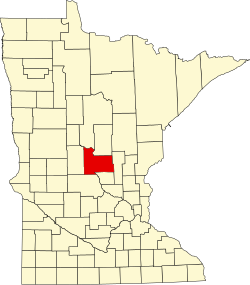2010 census
As of the census [7] of 2010, there were 1,242 people, 455 households, and 324 families living in the city. The population density was 624.1 inhabitants per square mile (241.0/km2). There were 487 housing units at an average density of 244.7 per square mile (94.5/km2). The racial makeup of the city was 99.0% White, 0.4% Asian, and 0.6% from two or more races. Hispanic or Latino of any race were 0.9% of the population.
There were 455 households, of which 42.9% had children under the age of 18 living with them, 56.7% were married couples living together, 8.6% had a female householder with no husband present, 5.9% had a male householder with no wife present, and 28.8% were non-families. 23.3% of all households were made up of individuals, and 7.7% had someone living alone who was 65 years of age or older. The average household size was 2.70 and the average family size was 3.18.
The median age in the city was 30.6 years. 31.6% of residents were under the age of 18; 7.9% were between the ages of 18 and 24; 30.1% were from 25 to 44; 20.8% were from 45 to 64; and 9.4% were 65 years of age or older. The gender makeup of the city was 50.1% male and 49.9% female.
2000 census
As of the census [4] of 2000, there were 816 people, 322 households, and 209 families living in the city. The population density was 473.7 inhabitants per square mile (182.9/km2). There were 328 housing units at an average density of 190.4 per square mile (73.5/km2). The racial makeup of the city was 98.77% White, 0.25% Native American, 0.49% Pacific Islander, and 0.49% from two or more races. Hispanic or Latino of any race were 0.86% of the population.
There were 322 households, out of which 34.8% had children under the age of 18 living with them, 51.2% were married couples living together, 8.7% had a female householder with no husband present, and 34.8% were non-families. 27.0% of all households were made up of individuals, and 13.7% had someone living alone who was 65 years of age or older. The average household size was 2.53 and the average family size was 3.14.
In the city, the population was spread out, with 26.8% under the age of 18, 10.8% from 18 to 24, 30.9% from 25 to 44, 17.9% from 45 to 64, and 13.6% who were 65 years of age or older. The median age was 34 years. For every 100 females, there were 101.5 males. For every 100 females age 18 and over, there were 94.5 males.
The median income for a household in the city was $33,173, and the median income for a family was $42,188. Males had a median income of $31,167 versus $20,446 for females. The per capita income for the city was $15,926. About 6.3% of families and 9.0% of the population were below the poverty line, including 8.4% of those under age 18 and 15.9% of those age 65 or over.





